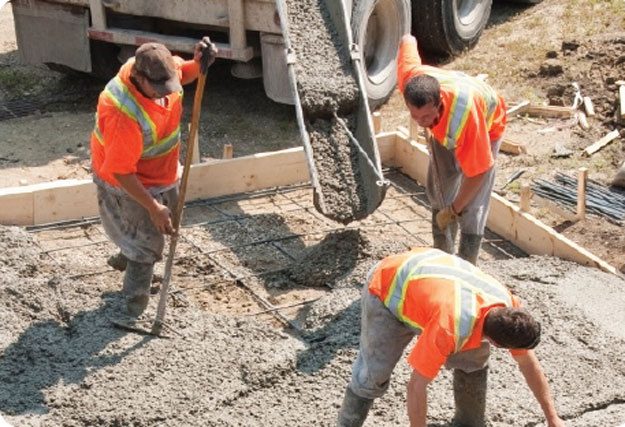In school, engineers are trained to use three elements to solve a technical problem: Given, To Find and The Solutions. In the real world, the civil/structural engineer is faced with a number of additional parameters to consider.
Another engineering concept, Value Engineering (VE), provides a technical solution linked with economic benefits that add definitive value for all project participants.
Fiber Reinforced Concrete (FRC) delivers on both the technical and economic benefits of the long-term durability equation for concrete reinforcement, while Welded Wire Fabric (WWF) contributes little to nothing. The new generation of temperature-shrinkage reinforcement (macrosynthetic concrete fibers) adds so much more to the sustainability and long-term durability of the concrete than a single plane of WWF that typically lies rusting on the subgrade.
What Are The Basic Benefits Of Fiber Reinforced Concrete (FRC)?
The sole purpose of welded wire fabric (WWF) as temperature-shrinkage reinforcement in cement concrete is to hold the concrete together after the cracks form as a result of internal stresses, which may include drying shrinkage or temperature related to cement hydration.
With WWF a single plane of wire mesh is located somewhere in the cross-section of the concrete depending on the instructions, or perhaps the lack of instructions, in the specifications on exactly where and how to place the wire mesh.
The quantity of wire mesh specified as temperature-shrinkage reinforcement in any concrete cross-section is determined by using one of five empirical formulae, one of which is the drag coefficient formula that can be found in ACI 318, Chapter 7. There are no standard consensus tests to measure the properties of the wire mesh as temperature-shrinkage reinforcement.
Wire mesh is a passive reinforcement system because the crack or cracks must find the wire mesh somewhere within the concrete for it to halt their progress. During this process the cracks continue to grow in width, length and depth, all of which become long-term durability issues.
Fiber Reinforced Concrete (FRC) is a three-dimensional reinforcement system with fibers distributed throughout the cross-section of the concrete. Fibers create an aggressive reinforcement system that intercepts and halts crack growth at the point of origin.
Fibers’ Technical Benefits
The fiber reinforcement system delivers much more than basic temperature-shrinkage reinforcement. This three-dimensional reinforcement provides quantifiable benefits that enhance the long-term durability of the concrete:
- Inhibits plastic settlement cracking
- Controls plastic shrinkage cracking
- Lowers water migration in concrete
- Resists impact and shatter forces
- Increases abrasion resistance
- Increases freeze/thaw durability
- Provides lasting reinforcement
- Provides significant improvement in fire protection
These technical benefits/advantages provide conclusive evidence as to why FRC, not wire mesh, is the selected solution when Value Engineering is the process used to address plastic shrinkage and temperature shrinkage in concrete.
Fibers’ Cost Benefits
When using cost to compare wire mesh and FRC the results are heavily weighted in favor of FRC. The major factors include:
1. Elimination of the time and labor required to place the wire mesh prior to the placement of the concrete.
2. Elimination of the need to use a concrete pump when placing slabs-on-ground since the ready mix trucks with FRC can drive onto the slab base.
3. Ability to use laser screeds without concern of erratically placed wire mesh.
4. Code option to use FRC instead of wire mesh on composite steel deck, which will eliminate the need for cranes, operators and extra labor.
5. Elimination of the need to meet the Code requirement to use permanent supports to position the wire mesh at the correct height in the concrete cross-section.



